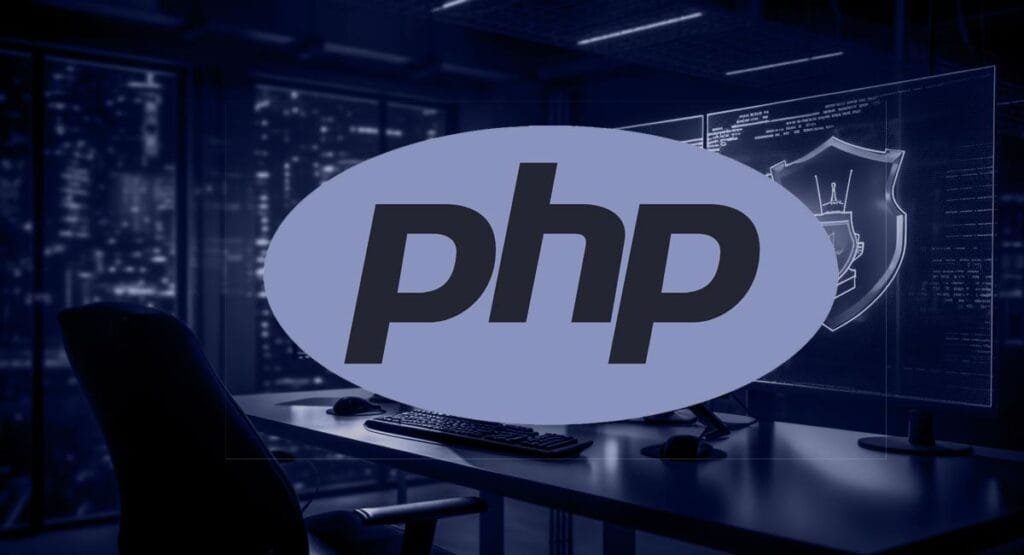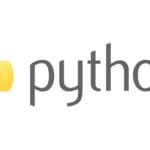PHP, an acronym for “PHP: Hypertext Preprocessor,” is a server-side scripting language that has been a cornerstone of web development for over two decades. As a beginner, diving into the world of PHP can seem daunting, but with the right guidance, it can be a rewarding journey. This article aims to provide a comprehensive introduction to PHP for those who are just starting out. By the end of this piece, you’ll have a solid understanding of PHP’s fundamentals, its significance in the web development landscape, and the tools and techniques to start crafting your own PHP-powered applications.
What will you learn from this article?
You’ll gain insights into PHP’s history, its core features, and its role in modern web development. We’ll also delve into basic coding concepts, best practices, and resources to further your PHP education. Whether you’re a budding developer or someone looking to add another tool to their tech repertoire, this article is your starting point.
PHP for Beginners
Table of Contents
- Why Choose PHP?
- Setting Up Your PHP Environment
- Basic PHP Syntax
- Variables and Data Types
- Control Structures
- Functions in PHP
- Frequently Asked Questions
- Final Thoughts
- Sources
Why Choose PHP?
PHP’s enduring popularity can be attributed to several factors:
- Open Source: PHP is free to use, modify, and distribute.
- Community Support: With a vast and active community, finding help, tutorials, and libraries is easy.
- Cross-Platform: PHP runs on various platforms, including Windows, Linux, and macOS.
- Integration: PHP integrates seamlessly with databases, making it a top choice for web applications.
Setting Up Your PHP Environment
Setting up a PHP environment is the first crucial step for any aspiring PHP developer. This environment allows you to write, test, and run PHP scripts on your local machine before deploying them to a live server. Here’s a step-by-step guide to help you set up your PHP development environment:
1. Choose a Local Server Environment
There are several all-in-one packages available that provide you with everything you need to run PHP scripts locally:
- XAMPP: This is a free, open-source software that provides an easy way for developers to create a local web server for testing purposes. It includes Apache, MariaDB, PHP, and Perl. It’s available for Windows, Linux, and macOS. Download XAMPP here.
- MAMP: Originally designed for Mac, but now also available for Windows, MAMP is another popular choice. It comes with Apache, MySQL, and of course, PHP. Download MAMP here.
- WampServer: This is a Windows-only solution that comes with Apache, PHP, and MySQL. Download WampServer here.
2. Installation
Once you’ve chosen your preferred local server environment, download and install it. The installation process is usually straightforward:
- For XAMPP, run the installer, and choose the components you want to install. The essential components for PHP development are Apache and PHP.
- For MAMP, drag and drop the MAMP folder into your Applications directory.
- For WampServer, run the installer and follow the on-screen instructions.
3. Starting the Server
After installation:
- For XAMPP, open the control panel and start Apache and MySQL.
- For MAMP, launch MAMP and click on ‘Start Servers’.
- For WampServer, launch the application and click on ‘Start All Services’.
4. Testing Your Setup
To ensure everything is working:
- Create a new file in the
htdocs(for XAMPP and MAMP) orwww(for WampServer) directory of your server environment. - Name it
test.php. - Add the following code:
phpinfo();
- Open your browser and navigate to
http://localhost/test.php. If you see a page displaying information about your PHP configuration, your setup is successful.
5. Configuring PHP (Optional)
Your local server environment will come with a default PHP configuration. However, as you delve deeper into PHP development, you might need to tweak some settings. The configuration file for PHP is called php.ini. You can find this file in the php folder of your server environment. Always backup the original php.ini file before making any changes.
6. Database Setup (Optional)
If you’re planning to develop applications that require a database, both XAMPP and MAMP come with MySQL/MariaDB. You can access and manage your databases using phpMyAdmin, which is included in these packages.
Setting up a PHP environment might seem technical initially, but with the tools available today, it’s more accessible than ever. Once your environment is up and running, you’re all set to start your journey into PHP development. Remember, the key is to practice, experiment, and learn from any mistakes you make along the way.
Basic PHP Syntax
PHP scripts start with <?php and end with ?>. Within these tags, you can embed PHP code within HTML. For example:
echo "Hello, World!";
Variables and Data Types
In PHP, as with many programming languages, variables are used to store data that can be used and manipulated throughout a script. Understanding the different data types available in PHP is crucial, as it determines what kind of data can be stored in a variable and how operations can be performed on it.
1. Variables in PHP
A variable in PHP starts with the $ sign, followed by the variable name. Here are some rules and conventions for naming variables:
- A variable name must start with a letter or an underscore
_, not a number. - A variable name can only contain alpha-numeric characters and underscores (A-z, 0-9, and _).
- Variable names are case-sensitive (
$ageand$Ageare two different variables).
Example:
$hello = "Hello, World!";
$age = 25;
$_temp = 37.5;
2. Data Types
PHP supports several data types, and they can be broadly categorized as:
a. Scalar Data Types:
- String: A sequence of characters. It can be any text inside single or double quotes.
$name = "John Doe";
- Integer: A non-decimal number. It can be positive or negative.
$age = 30;
- Float (or Double): A number with a decimal point or a number in exponential form.
$weight = 70.5;
- Boolean: Represents two possible states:
TRUEorFALSE.$isAdult = true; // or false
b. Compound Data Types:
- Array: An ordered map that associates values to keys. It can hold multiple values at once.
$fruits = array("apple", "banana", "cherry");
- Object: Instances of classes, which are essentially user-defined data types.
class Car {
function start() {
echo "Car started!";
}
}
$myCar = new Car;
c. Special Data Types:
- Resource: Holds a reference to external resources, like database connections.
- NULL: Represents a variable with no value or no content. It’s case-insensitive.
$var = NULL;
3. Checking Data Types
PHP provides several functions to check the data type of a variable:
gettype($var)– Returns the type of the variable.is_int($var)– Checks if the variable is an integer.is_float($var)– Checks if the variable is a float.is_string($var)– Checks if the variable is a string.is_bool($var)– Checks if the variable is a boolean.is_array($var)– Checks if the variable is an array.is_object($var)– Checks if the variable is an object.is_null($var)– Checks if the variable is NULL.
Example:
$var = "Hello";
if (is_string($var)) {
echo "$var is a string!";
}
4. Variable Scope
In PHP, variables can be declared anywhere in the script. The scope of a variable determines its accessibility. PHP has three variable scopes:
- Local: A variable declared within a function has a local scope and can only be accessed within that function.
- Global: A variable declared outside a function has a global scope and can be accessed outside and inside functions (using the
globalkeyword). - Static: A static variable retains its value even after the function has completed.
Understanding variables and data types is foundational in PHP. They form the building blocks of any PHP application. As you delve deeper into PHP, you’ll encounter more complex data structures and types, but mastering these basics will give you a strong footing to tackle more advanced topics.
In PHP, as with many programming languages, variables are used to store data that can be used and manipulated throughout a script. Understanding the different data types available in PHP is crucial, as it determines what kind of data can be stored in a variable and how operations can be performed on it.
Control Structures
Control structures are foundational elements in PHP (and most programming languages) that allow developers to dictate the flow of program execution based on conditions or loops. They are essential for creating dynamic and interactive applications. In PHP, there are several control structures, including conditional statements and loop constructs.
1. Conditional Statements
Conditional statements are used to perform different actions based on different conditions.
a. if Statement
The if statement is used to execute some code only if a specified condition is true.
$age = 20;
if ($age >= 18) {
echo "You are an adult!";
}
b. if...else Statement
The if...else statement is used to execute some code if a condition is true and another code if the condition is false.
$age = 15;
if ($age >= 18) {
echo "You are an adult!";
} else {
echo "You are a minor!";
}
c. if...elseif...else Statement
The if...elseif...else statement is used to select one of several blocks of code to be executed.
$age = 18;
if ($age > 18) {
echo "You are an adult!";
} elseif ($age == 18) {
echo "You just became an adult!";
} else {
echo "You are a minor!";
}
d. switch Statement
The switch statement is used to select one of many blocks of code to be executed, based on the value of a variable.
$day = "Tue";
switch ($day) {
case "Mon":
echo "Today is Monday!";
break;
case "Tue":
echo "Today is Tuesday!";
break;
default:
echo "Unknown day!";
}
2. Loop Constructs
Loops are used to execute a block of code repeatedly, as long as a specified condition is true.
a. while Loop
The while loop executes a block of code as long as the specified condition is true.
$count = 1;
while ($count <= 5) {
echo "Number: $count\n";
$count++;
}
b. do...while Loop
The do...while loop will execute the block of code once, then it will repeat the loop as long as the condition is true.
$count = 1;
do {
echo "Number: $count\n";
$count++;
} while ($count <= 5);
c. for Loop
The for loop is used when you know in advance how many times the script should run.
for ($i = 1; $i <= 5; $i++) {
echo "Number: $i\n";
}
d. foreach Loop
The foreach loop is used to loop through each key/value pair in an array.
$colors = array("red", "green", "blue");
foreach ($colors as $color) {
echo "$color\n";
}
3. Control Structure-Related Keywords
break: Used to exit a loop or aswitchstatement.continue: Used to skip the rest of the current loop iteration and continue with the next one.return: Used to exit a function and return a value.
Control structures are the backbone of any dynamic application. They allow developers to control the flow of execution, make decisions, and repeat actions in their code. Mastering control structures is essential for anyone looking to become proficient in PHP or any other programming language. As you practice and experiment with these structures, you’ll find that they provide the flexibility and power needed to build complex and interactive web applications.
Functions in PHP
Functions are one of the fundamental building blocks in PHP. They allow you to encapsulate a piece of code in a reusable way, making your scripts more modular, readable, and maintainable. In PHP, there are two main types of functions: built-in functions and user-defined functions.
1. What is a Function?
A function is a block of statements that can be used repeatedly in a program. It takes some input, processes it, and then produces some output.
2. Built-in Functions
PHP comes with a vast array of built-in functions that perform a variety of tasks. These are part of the PHP core or are available through extensions. Some commonly used built-in functions include:
echo()andprint(): Used for outputting text.date(): Returns the current date/time.strlen(): Returns the length of a string.array_merge(): Merges one or more arrays.isset(): Checks if a variable is set and is not NULL.
3. User-defined Functions
Apart from the built-in functions, PHP allows you to define your own functions. Here’s how you can create a user-defined function:
function functionName() {
// code to be executed;
}
Example:
function greet($name) {
echo "Hello, $name!";
}Parameters and Return Values
Functions can accept parameters (also known as arguments) and return values.
- Parameters: These are specified after the function name, inside the parentheses. You can add as many parameters as you want, just separate them with a comma.
function add($num1, $num2) {
return $num1 + $num2;
}
- Return Values: The
returnstatement is used to return a value from a function. Once a return statement is executed, the function exits, and the code that follows will not be executed.echo add(5, 3); // Outputs: 8
Default Parameter Values
You can set default values for your function parameters. If a value is provided when the function is called, it will override the default.
function makeCoffee($type = "cappuccino") {
return "Making a cup of $type.\n";
}echo makeCoffee(“espresso”); // Outputs: Making a cup of espresso.
4. Variable Scope in Functions
Variables declared inside a function are local to that function and cannot be accessed outside of it. To use a global variable inside a function, you need to use the global keyword.
$x = 5; // global scope
function test() {
global $x; // use global keyword to access global variable
echo $x; // Outputs: 5
}
test();
5. Anonymous Functions
PHP supports the use of anonymous functions (also known as closures). These are functions without a name. They are most commonly used as callback functions.
$greet = function($name) {
echo "Hello, $name!";
};Functions, whether built-in or user-defined, are essential tools in a PHP developer’s toolkit. They promote code reusability, improve readability, and help in modularizing the code. As you progress in your PHP journey, you’ll find yourself relying heavily on functions to structure and organize your code efficiently.
Frequently Asked Questions
Final Thoughts
PHP’s longevity in the fast-paced world of web development is a testament to its robustness and versatility. For beginners, PHP offers an accessible entry point into server-side programming. Its vast ecosystem, rich feature set, and active community make it a valuable skill for any web developer. The most crucial takeaway? Start with the basics, practice regularly, and tap into the PHP community for support and growth.
I write for and assist as the editor-in-chief here on Host Screamer. I’m a digital entrepreneur since 1992. Always Keep Learning! Notice: All content is published for educational and entertainment purposes only. NOT LIFE, HEALTH, SURVIVAL, FINANCIAL, BUSINESS, LEGAL OR ANY OTHER ADVICE. Learn more about Mark Mayo




